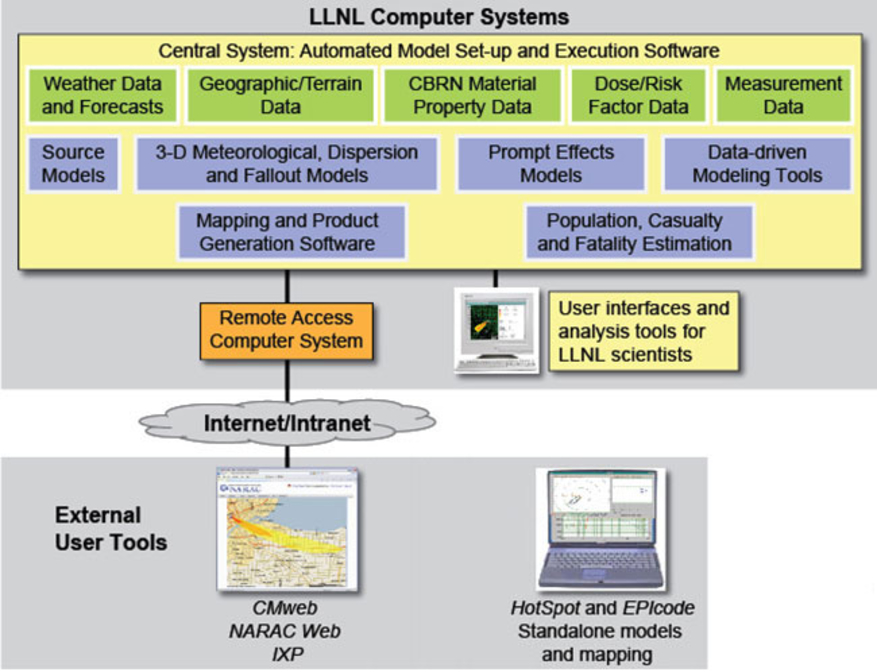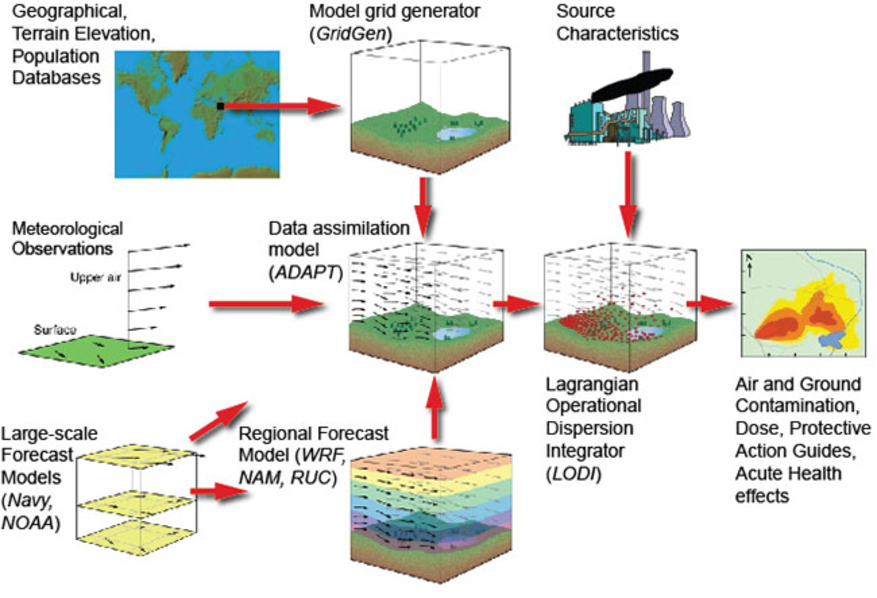The NARAC modeling system provides 3-D worldwide plume model predictions. Automated software is used to generate standard products in 5 to 10 minutes. NARAC analysts use advanced capabilities of the system to develop refined products based on field data and provide customized quality-assured products on request.
As illustrated schematically in the figure, the core NARAC emergency response system consists of:
- A coupled suite of meteorological and atmospheric transport and dispersion models
- System databases linked to the models that provide chemical, biological, and radiological material property and health-effect information, topography and other geographical data, real-time meteorological observational data, and global and mesoscale weather forecasts and analyses.
NARAC software automates the process of extracting the relevant data for the period and location of interest, handles model execution, and generates the final model products. The schematic flow chart below illustrates some of the primary pathways through the system and shows the coupling of the Atmospheric Data Assimilation and Parameterization Techniques (ADAPT) model and the Lagrangian Operational Dispersion Integrator (LODI) model. ADAPT and LODI run on variable resolution meteorological and concentration grids that are generated by the Grid Generator (GridGen) utility. In addition, NARAC's modeling system includes source term and other specialized models, for calculating the impacts of specific types of releases.
The ADAPT model constructs 3-D fields of key variables such as the mean winds, pressure, precipitation, temperature, and turbulence, from meteorological observations or numerical weather prediction output, including NARAC's in-house version of Weather Research and Forecasting (WRF) model. The LODI particle dispersion model solves the 3-D advection-diffusion equation using a Lagrangian stochastic, Monte Carlo method and the meteorological fields produced by the ADAPT model. LODI simulates the processes of mean wind advection and turbulent diffusion, along with radioactive decay and production, biological-agent degradation, first-order chemical reactions, gravitational settling, dry deposition, and wet deposition from precipitation effects. LODI also incorporates modules for specialized applications such as buoyant and momentum plume rise.






